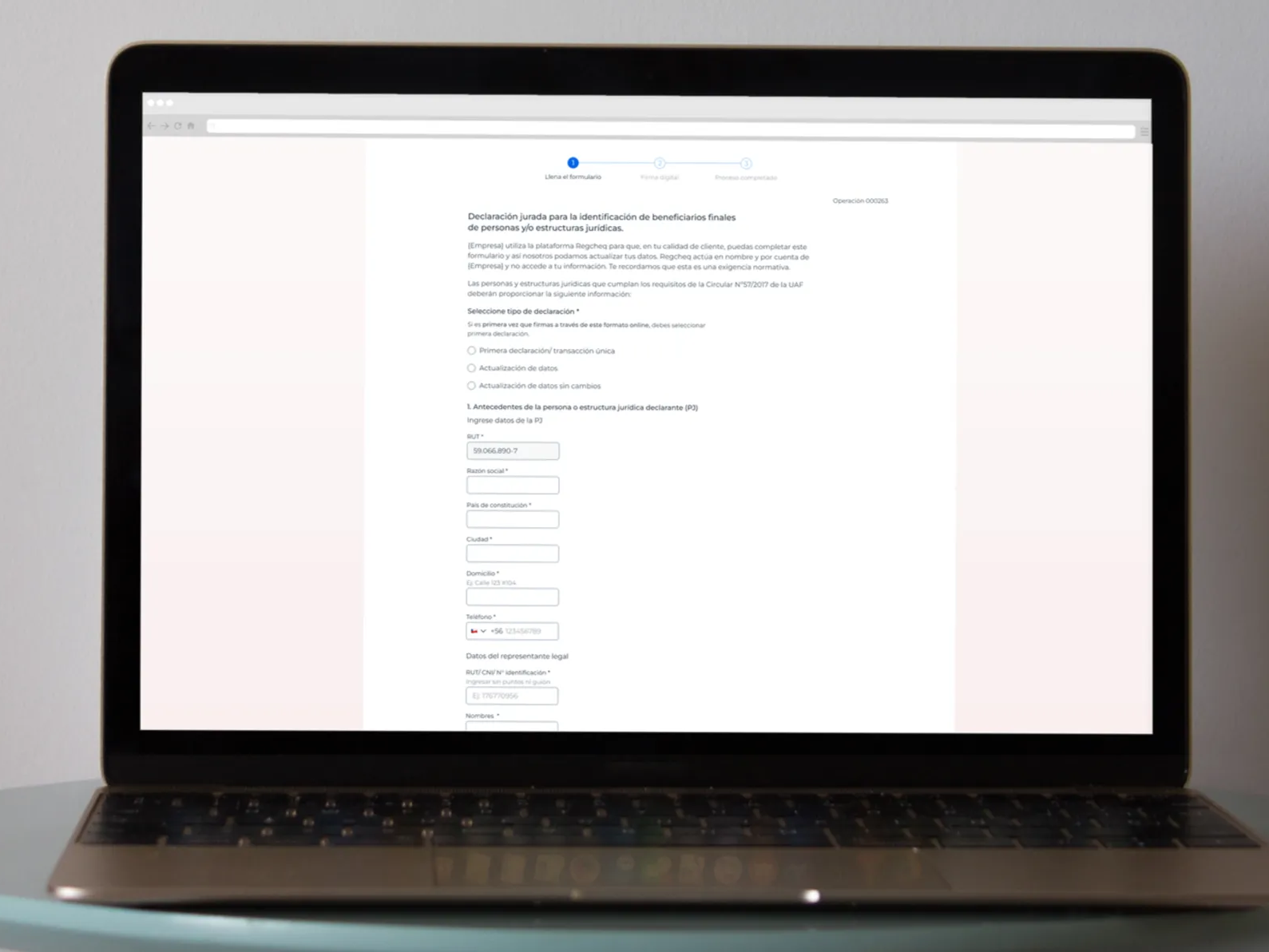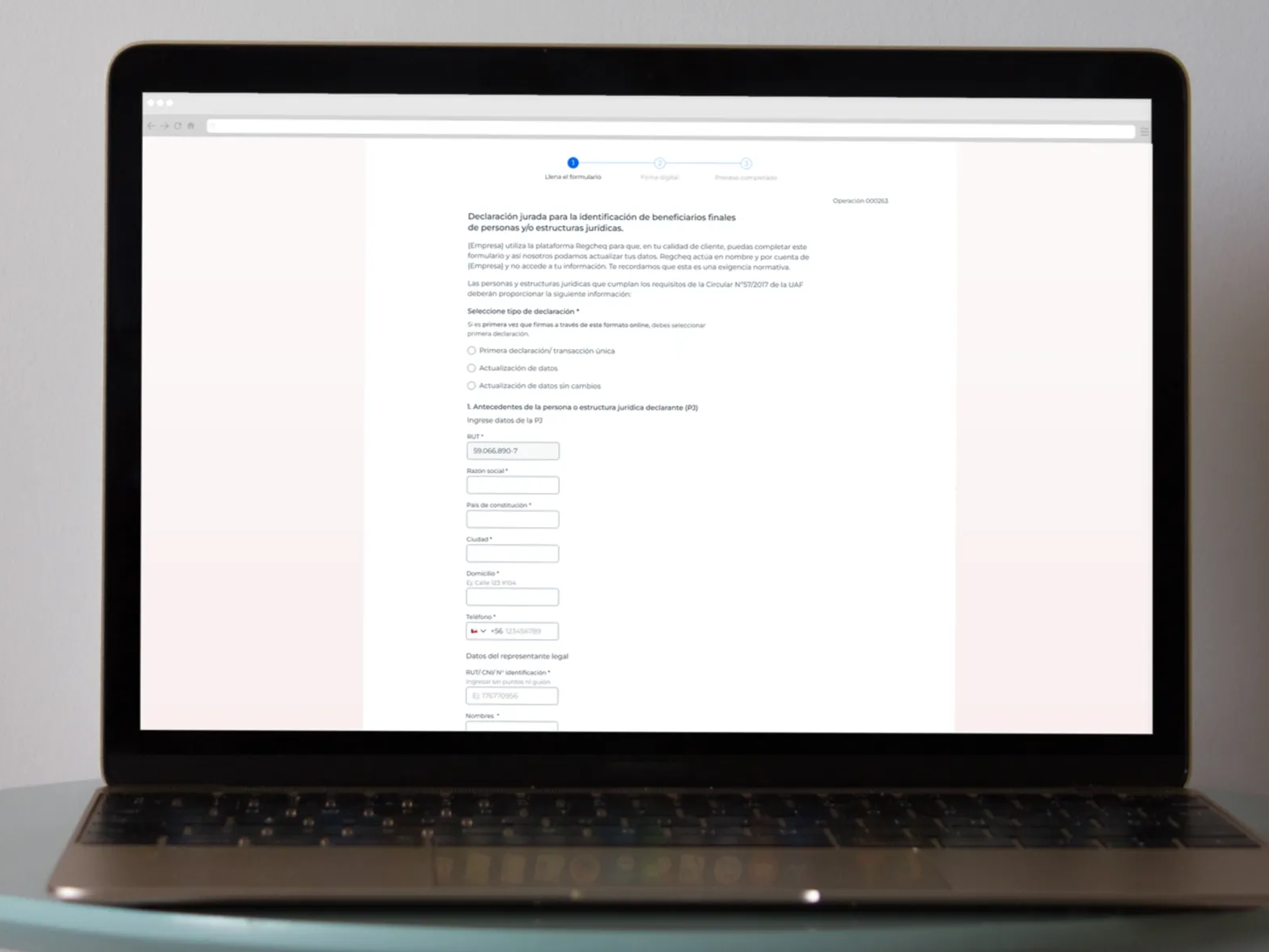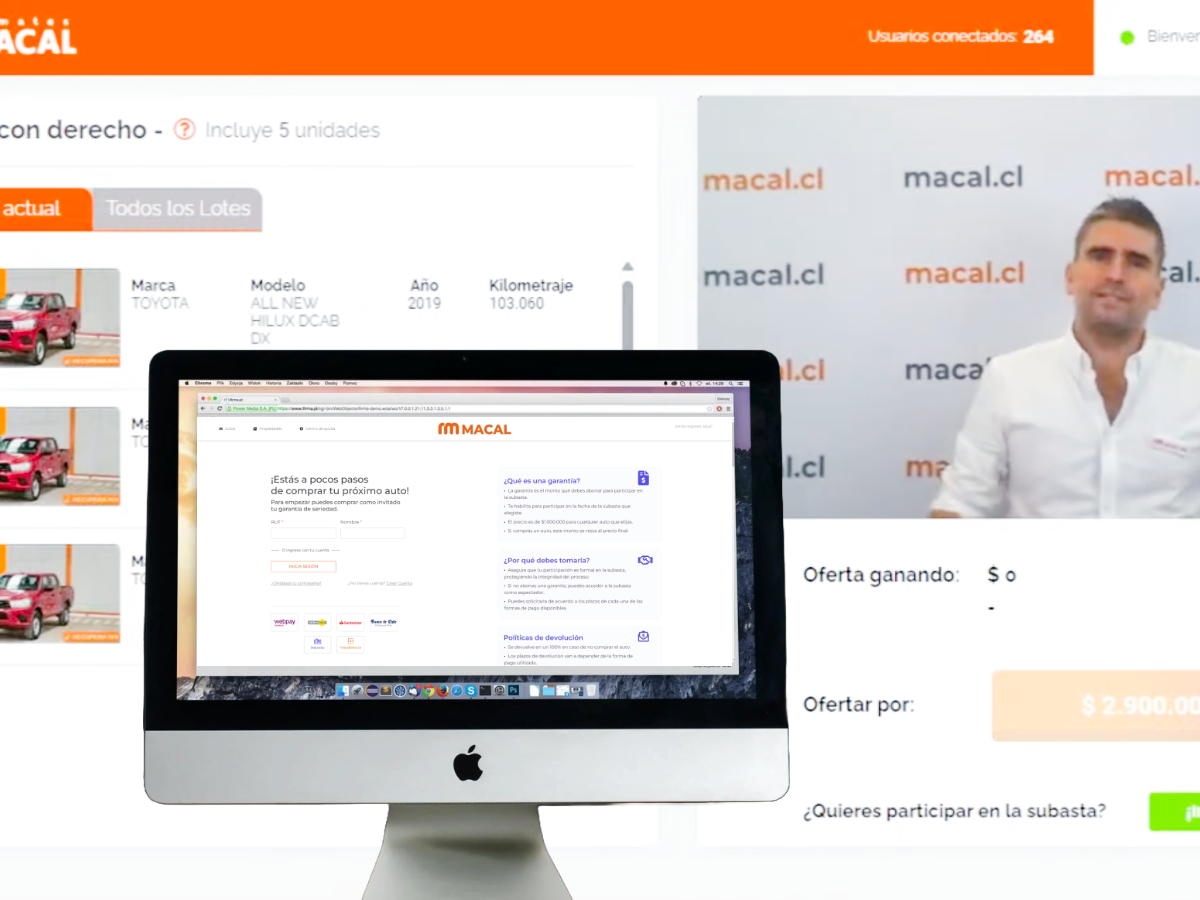Regcheq is a SaaS transaction-monitoring platform that enables clients to track transfers and deposits, analyze customer activity, and minimize false-positive alerts.
When I joined, the New Transaction module was outdated, error-prone, and critically underused, despite being central to the product.
My Role: Lead Product Designer
I led the redesign of this core feature to improve usability, aligning user needs with product goals and ensuring a smooth transition from outdated patterns to a more intuitive experience.
As the only UX designer on the team, I also led the redesign of Regcheq’s IT workflow, aligning user needs with business priorities and improving overall usability.
Challenge
• The new transaction flow experienced issues with poor information organization and unclear visual hierarchy, leading to frequent user errors.
• Options such as the “Involves Cash” toggle were misaligned, which caused unnecessary options to appear or resulted in mistakes.
• Users were unable to edit existing entries; any errors required them to restart the entire process.
• A high volume of customer support requests indicated deeper usability problems.
Goal - Redesign the transaction feature to reduce friction, prevent errors, and create a smooth, intuitive, and efficient flow.
Research & Discovery
• Analyzed user session replays, heatmaps, and click patterns using Datadog RUM (Real User Monitoring).
• Conducted interviews with Customer Success and Sales teams to identify user pain points and technical limitations.
• Interview the development team and other stakeholders to gain insight into how the feature was designed and defined.
• Performed hands-on walkthroughs to observe friction points firsthand, such as confusing input layouts and poorly labeled switches.
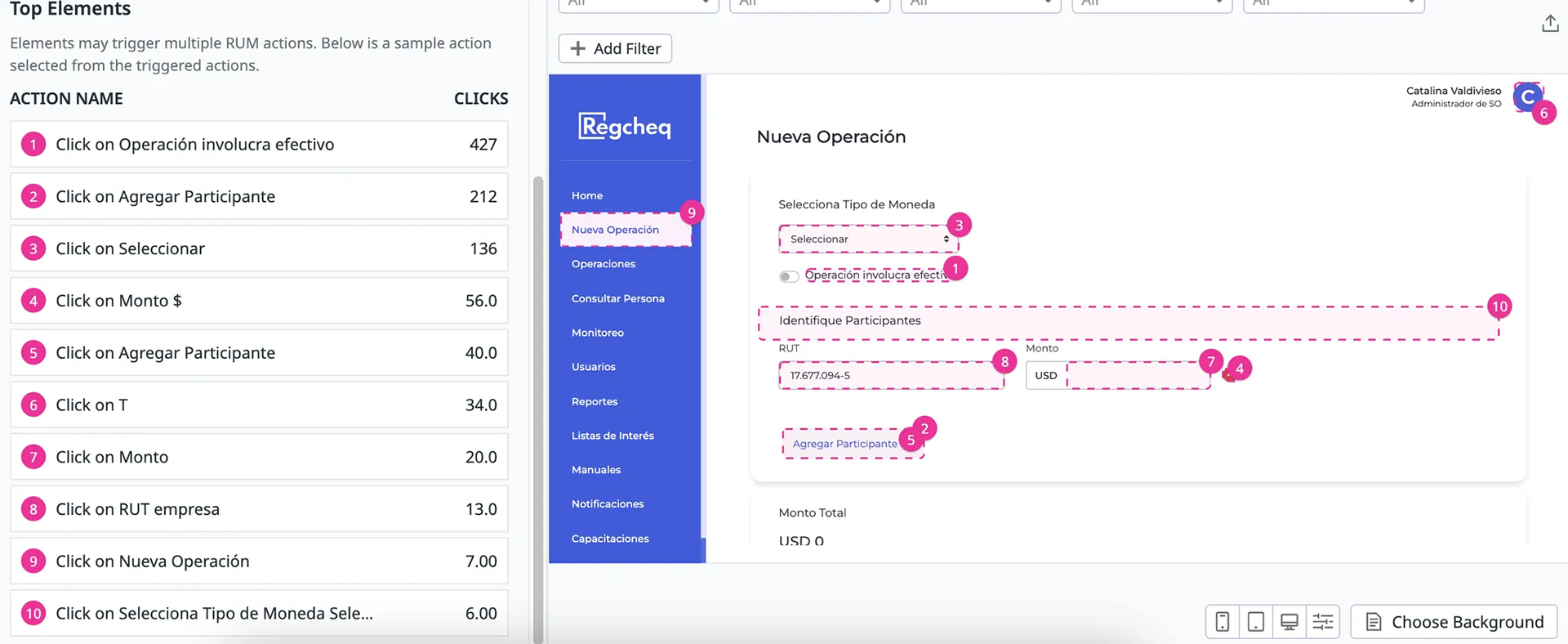
Top user actions.

The interaction matrix of the top action.


Key Design Solutions
Structured Two-Step Workflow
Participants and transaction details are added separately for better clarity
Participants and transaction details are added separately for better clarity
Reordered Currency Options
Currencies are organized based on their frequency of use
(Chilean Peso → UF → USD)
Currencies are organized based on their frequency of use
(Chilean Peso → UF → USD)
Relocated & Relabeled “Involves Cash” Toggle
This toggle has been moved to prevent accidental activation, and its purpose has been clarified
This toggle has been moved to prevent accidental activation, and its purpose has been clarified
Improved Participant Interactions
We have added delete icons, merged redundant links for legal participants, and enabled the option to add related contacts.
We have added delete icons, merged redundant links for legal participants, and enabled the option to add related contacts.
Visual Harmonization
We created a UI library with a clean typographic hierarchy, consistent button styles, and a restrained color palette to improve visual coherence.
We created a UI library with a clean typographic hierarchy, consistent button styles, and a restrained color palette to improve visual coherence.
Visual changes
The software initially had an outdated design, lacked a clear hierarchy, and misused colors, resulting in accessibility issues as users struggled to distinguish between different feature states.
To address these problems, we made small but impactful changes that ultimately shaped the final design based on a UI kit, which was then implemented throughout the entire software.
The UI library includes typography, color palettes, and both primary and secondary buttons. I eliminated unnecessary blue elements, such as in switches and total displays, and ensured that text and buttons were consistently aligned to the left. Additionally, I changed the feature name from "Iniciar flujo" (Start Flow) to "Nueva operación" (New Operation) and added an icon for easily removing participants.
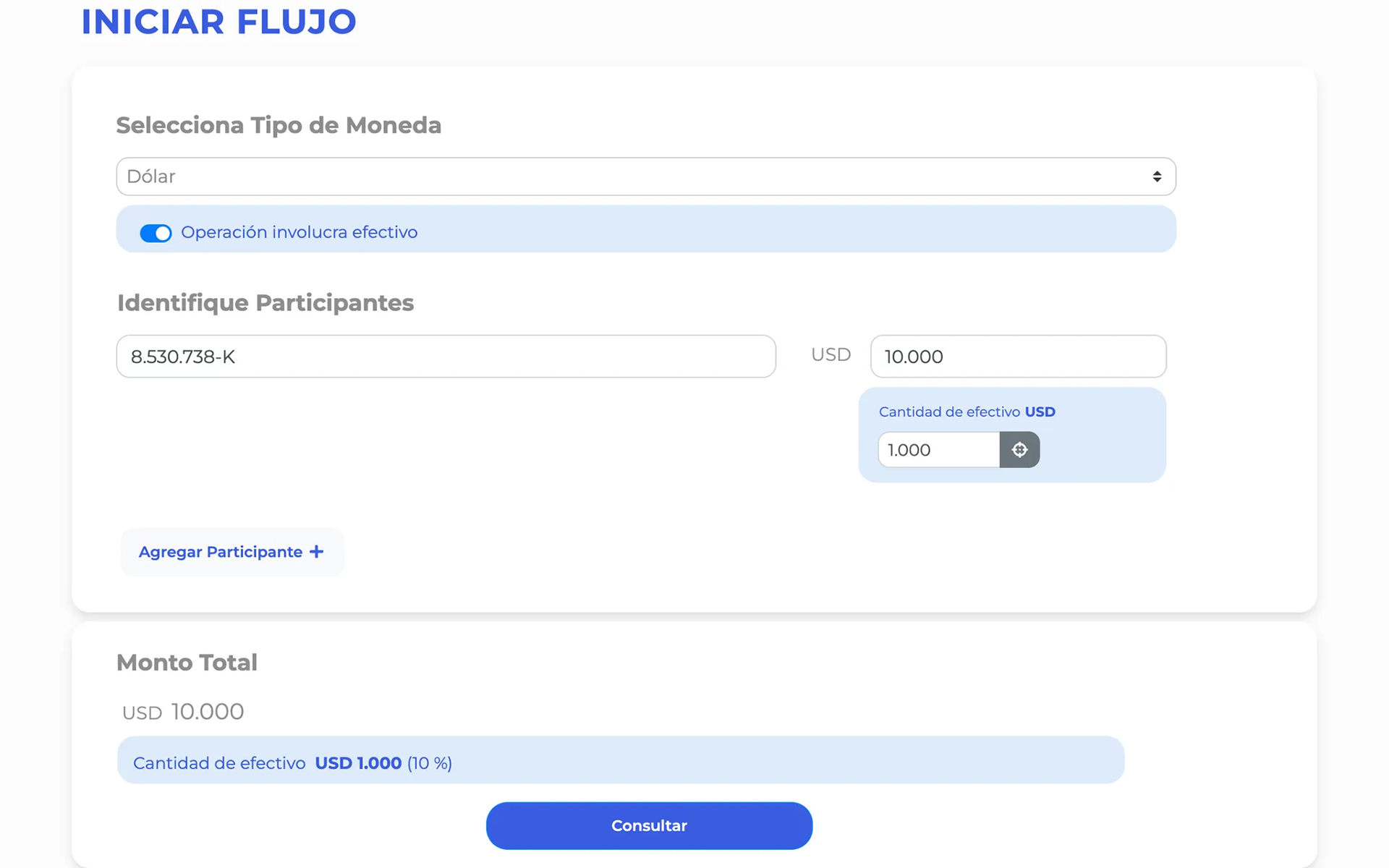

Final Design
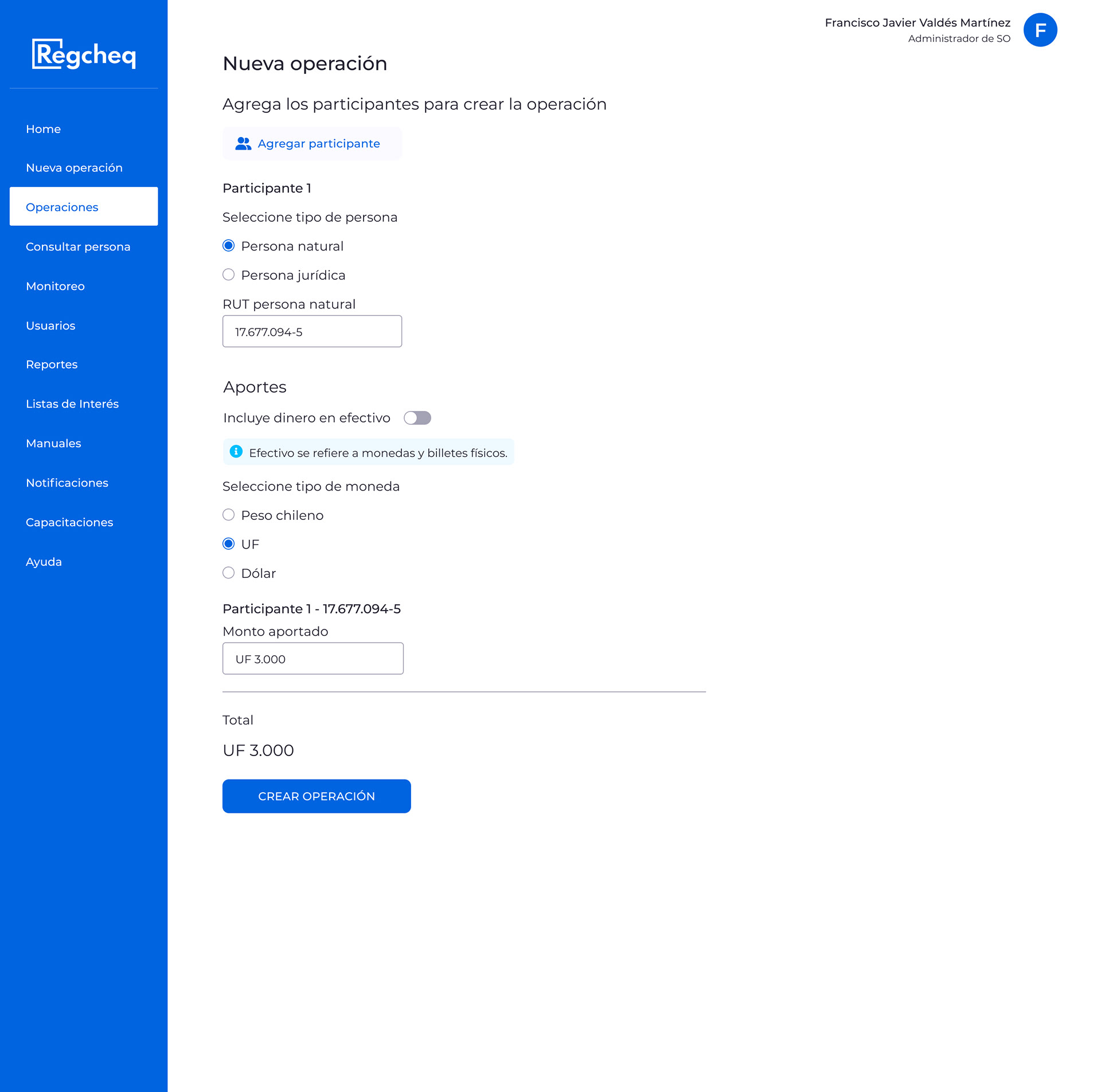
Final Design Natural Participant
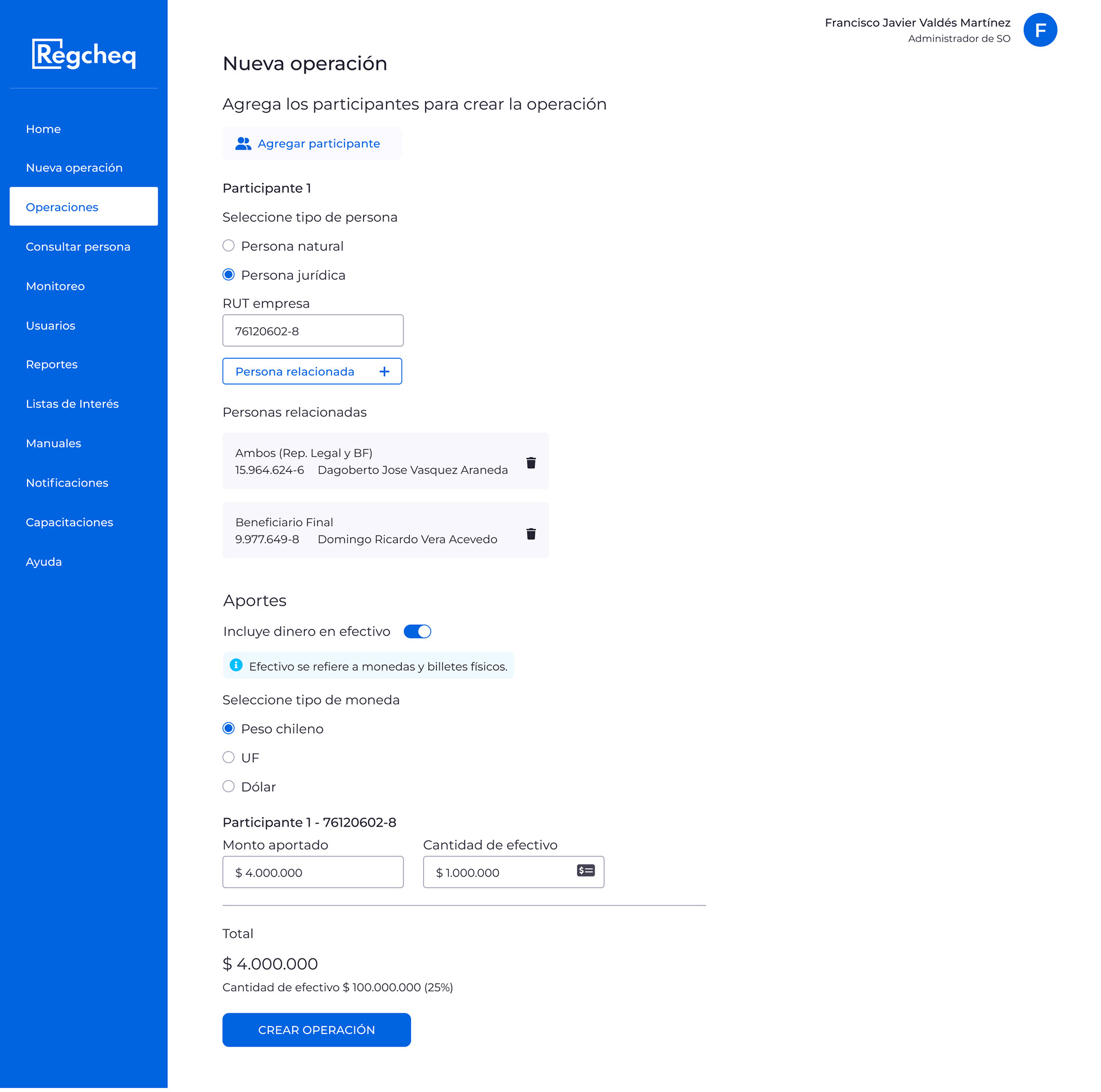
Final Design Legal Participant
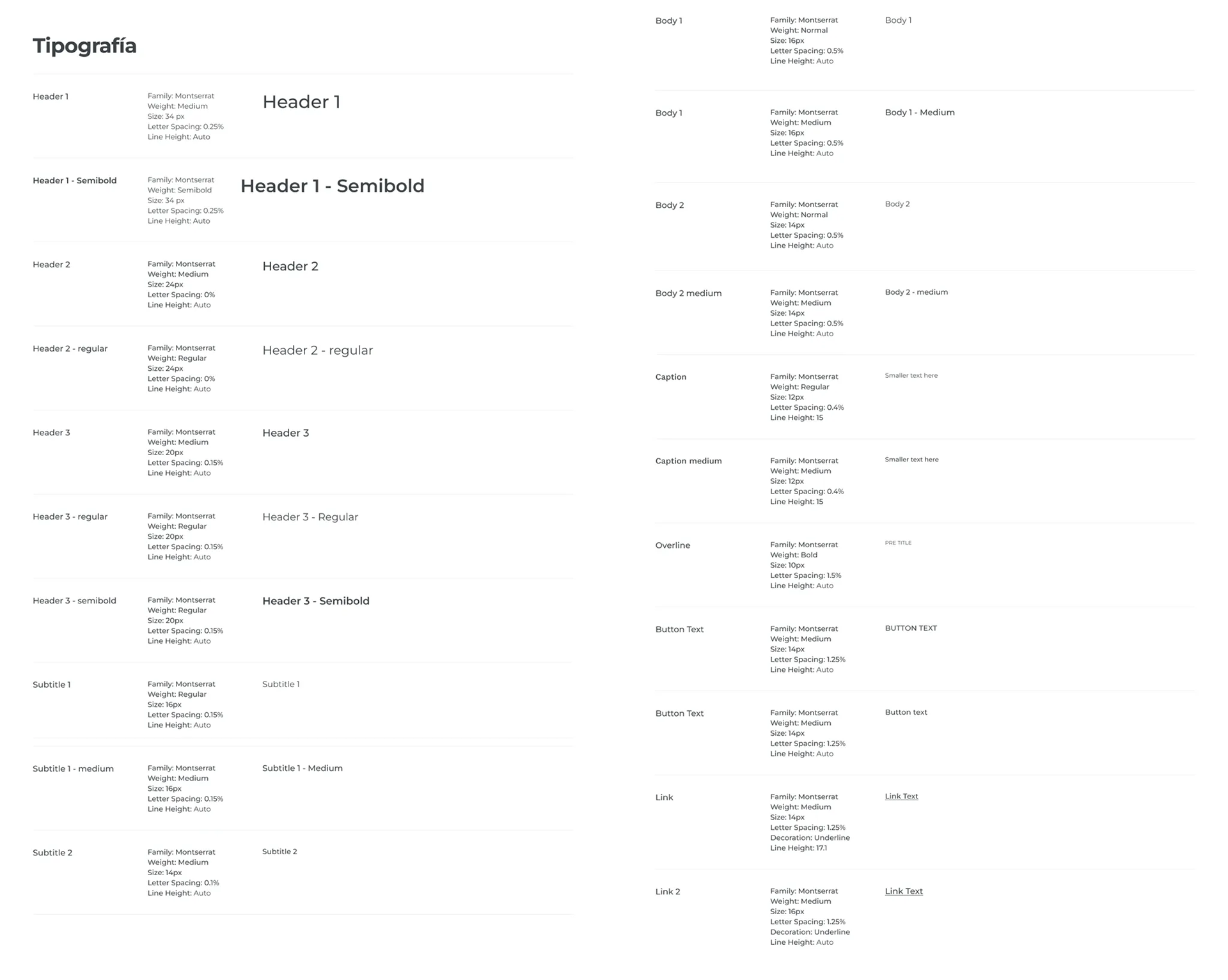
Tipography Library
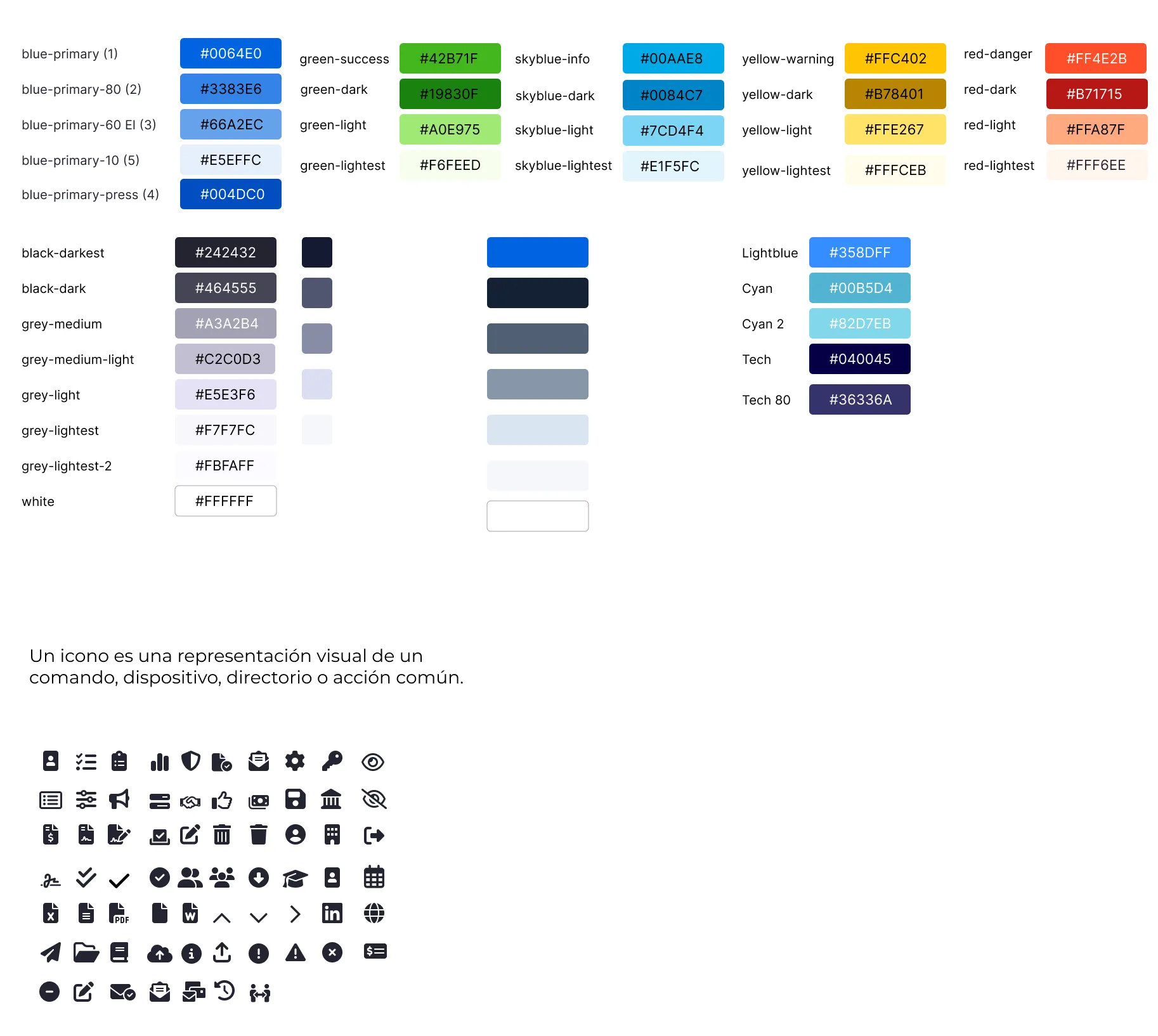
Colors and Icons
Data comparison after production release
Comparing data before and after the redesign confirmed the effects of these changes. Previously, the development team had only made small fixes in response to client complaints, rather than addressing core usability issues. After the redesign, the ranking of top user actions shifted, showing that the “Involves Cash” switch, which was once a common source of errors, was no longer a critical step. Moving this field resulted in a 79.54% decrease in clicks, dropping from 303 to 62.
Additionally, reorganizing the information and changing the order of currency input improved the user flow, boosting both efficiency and usability. Datadog’s analytics and session replay tools were essential for identifying friction points, confirming design choices, and measuring the redesign's success.
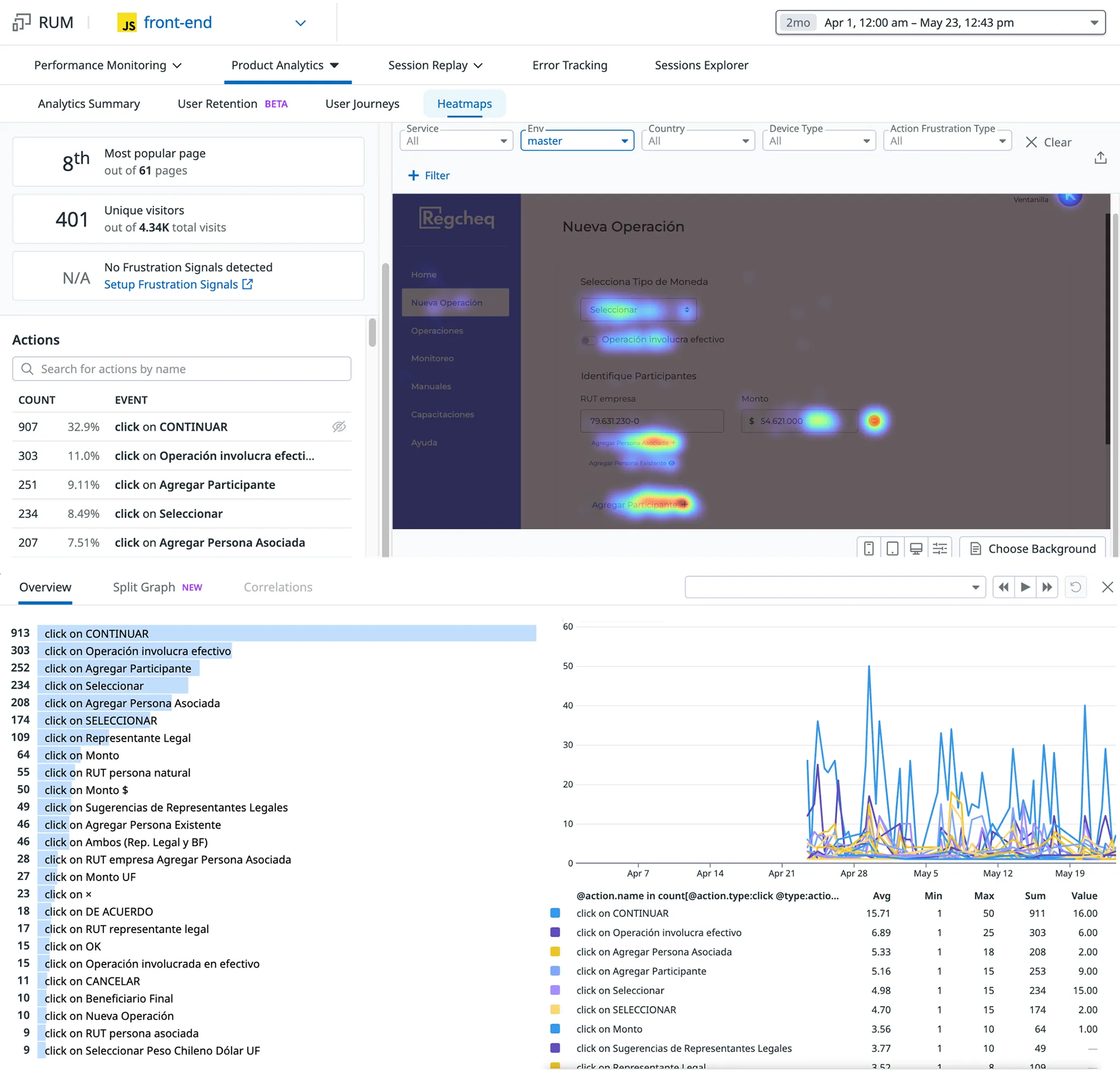
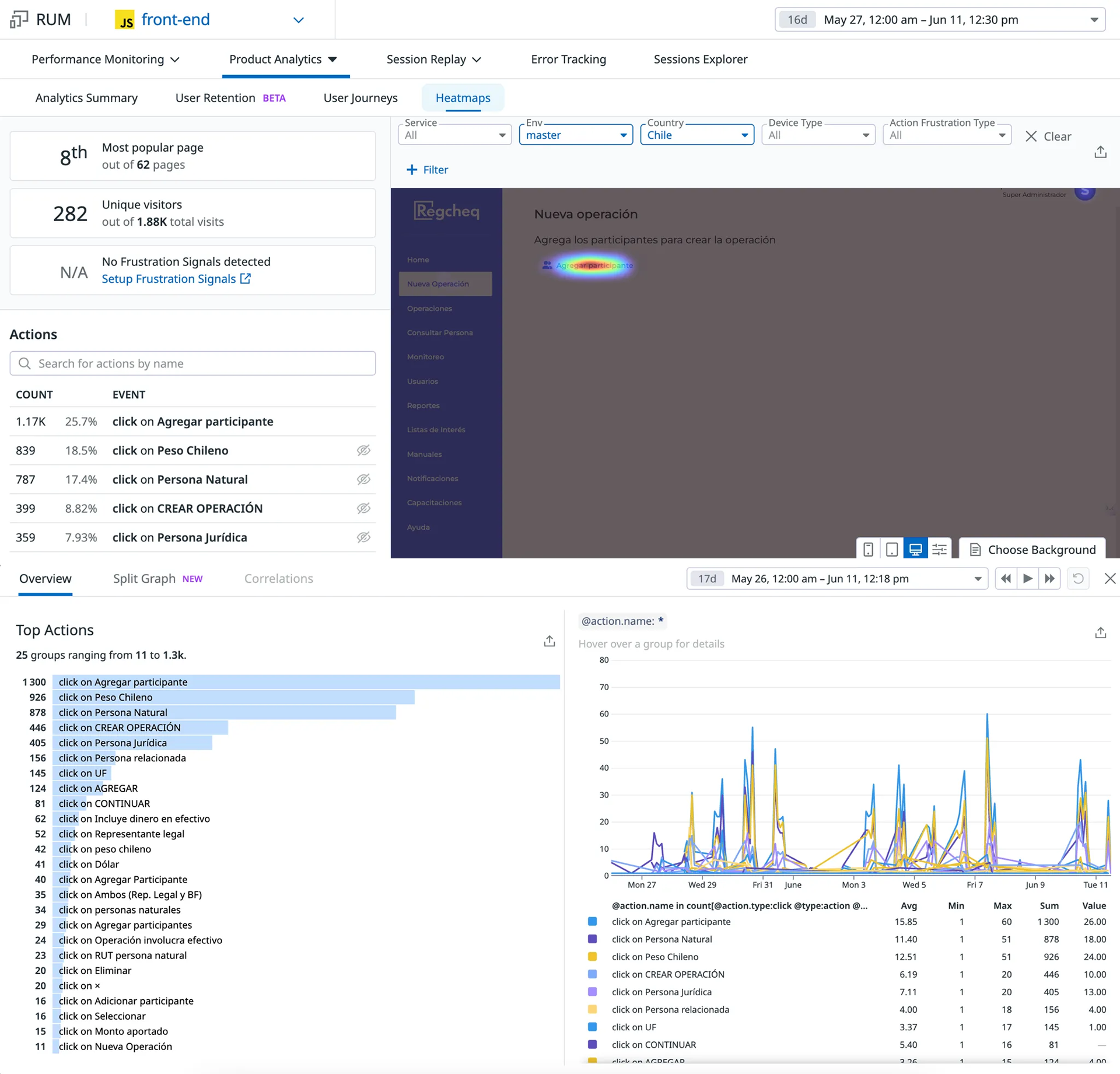
Key Outcomes & Results
• ↓ 79.5% decrease in clicks on “Involves Cash” toggle, lowering accidental activations from 303 to 62.
• Streamlined flow increased user efficiency, resulting in a higher percentage of users successfully completing tasks.
• The support request volume has dropped, indicating fewer usability issues.
• Visual enhancements improved clarity and eased cognitive load for users.
Reflections
• Datadog’s analytics and session replay tools proved crucial for quickly uncovering hidden usability issues.
• Small visual and flow adjustments can significantly enhance accuracy and efficiency.
• Collaborating with Customer Success, Tech, and Sales was vital to align user needs with business goals.
Mockups New Transaction Design
Natural participant.
Two participants.
Legal participant.
Modals of related people.
